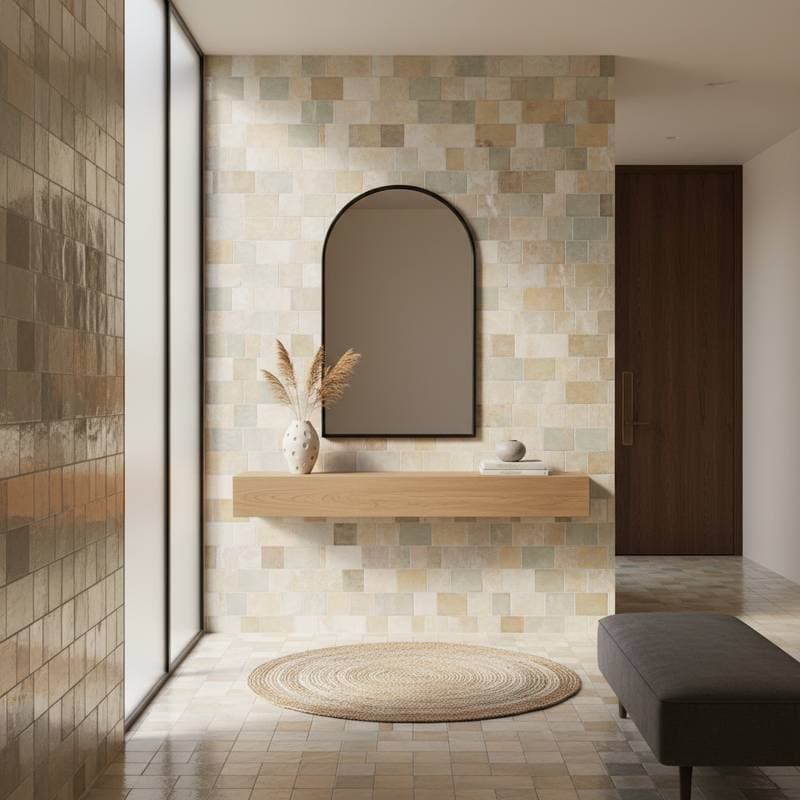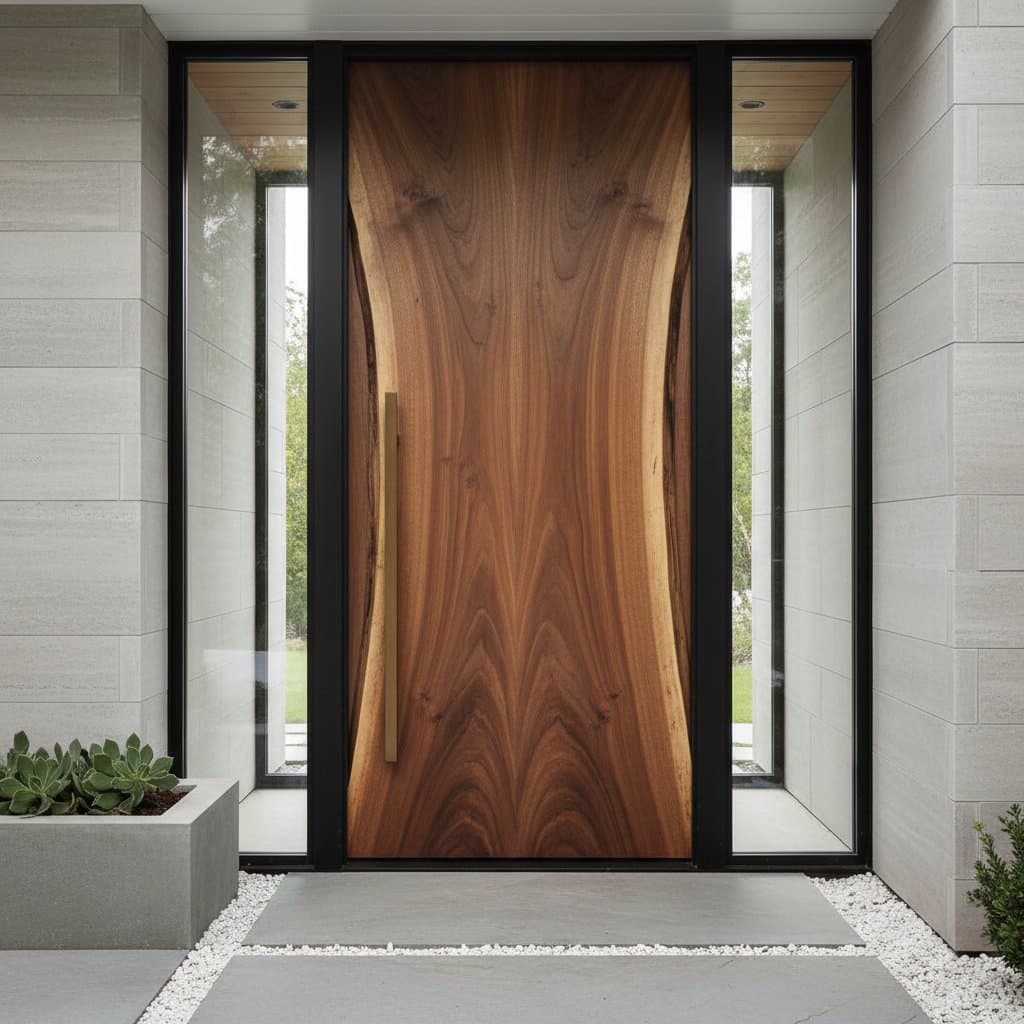The Essence of Japandi in Modern Entryways
The entryway serves as the gateway to a home, shaping first impressions for visitors and providing a daily ritual for residents. In 2025, Japandi emerges as a leading style, harmonizing Japanese minimalism with Scandinavian hygge to foster serene yet inviting spaces. This approach prioritizes natural elements and thoughtful functionality, resulting in entryways that endure beyond trends.
Core Principles of Japandi Design
Japandi draws from Japanese wabi-sabi, which embraces imperfection and transience, and Scandinavian principles of coziness through light, natural materials. These influences converge to emphasize simplicity, sustainability, and emotional well-being. The style avoids ornamentation in favor of clean lines and organic textures that promote a sense of peace.
Balance defines Japandi: spaces feel airy yet grounded, with every element contributing to harmony. Designers recommend starting with a neutral base and layering subtle textures to achieve depth without overwhelming the senses. This foundation ensures the entryway functions as a calming transition between the outside world and the home interior.
Essential Components for a Japandi Entryway
Curate a Japandi entryway by selecting pieces that enhance utility and aesthetics. Focus on items that integrate seamlessly, allowing the space to breathe while accommodating daily needs.
- Natural Materials: Incorporate wood like light oak for brightness or walnut for depth, alongside bamboo or stone for texture. These choices evoke nature; for instance, pair a reclaimed wood bench with linen cushions to soften edges.
- Neutral Color Scheme: Opt for soft beiges, taupes, grays, and whites as primary tones. Introduce black accents sparingly on hardware or frames to add definition without disrupting serenity.
- Purposeful Storage: Install low cabinets or wall hooks that conceal clutter. A built-in shoe cubby with sliding doors maintains order, ensuring the space remains visually uncluttered.
- Gentle Lighting: Use warm LED bulbs in sconces or pendant fixtures with rice paper shades. Position lights to cast soft shadows that highlight wood grains and fabrics.
- Subtle Organic Forms: Select asymmetrical pottery or rounded mirrors to introduce wabi-sabi charm. Avoid symmetry; instead, place a single artisanal vase on a console for quiet elegance.
Evaluating Material Options
Material selection influences both appearance and longevity in high-traffic entryways. Consider cost, durability, and upkeep when choosing; the table below outlines key comparisons to guide decisions.
| Material | Initial Cost | Lifespan | Maintenance | Best For |
|---|---|---|---|---|
| Light Oak | Moderate | Long | Occasional oiling | Bright, airy Scandinavian vibes |
| Walnut | Higher | Very Long | Wood-safe cleaning | Rich, grounded Japanese tones |
| Bamboo | Lower | Medium | Wipe and reseal periodically | Eco-friendly, budget designs |
| Concrete | Moderate | Long | Periodic sealing | Sleek, contemporary minimalism |
| Natural Stone | Higher | Very Long | Cleaning and resealing | Durable, textured high-use areas |
For example, light oak suits sunlit entryways, enhancing warmth, while concrete provides a modern base that pairs well with wooden accents.
Steps to Design a Functional Japandi Entryway
Effective design begins with understanding the space's role in daily life. Map out traffic patterns and storage requirements to ensure smooth flow from door to interior.
- Assess Usage: Track how family members enter and exit; note areas for shoe removal or bag storage to identify priorities.
- Measure and Plan: Record dimensions and light sources; sketch layouts that position a central bench for seating without blocking pathways.
- Select Foundations: Install flooring like wide-plank wood or slate tiles first, ensuring they align with wall treatments in neutral tones.
- Incorporate Furniture: Add multifunctional pieces, such as a console with integrated drawers, positioned to allow at least 36 inches of clearance.
- Layer Lighting and Accessories: Install dimmable fixtures and test at various times; introduce one or two plants, like a fiddle-leaf fig, for vitality.
- Refine Details: Adjust for cohesion, such as matching door hardware in brushed brass to complement wood finishes.
This process creates an entryway that supports routines while preserving calm.
Achieving Harmony Between Simplicity and Comfort
Pure minimalism risks sterility, so Japandi tempers it with tactile warmth. Layer materials like a jute rug underfoot and wool throws on seating to build subtle interest. Select items with personal significance, such as a handcrafted wooden tray for keys, to infuse the space with intention.
Plants enhance this balance; choose low-maintenance varieties like ZZ plants that thrive in indirect light. Position them sparingly to avoid crowding, allowing each to contribute to the organic flow.
Prioritizing Durability and Upkeep
Entryways endure weather, foot traffic, and spills, demanding resilient choices. Apply matte polyurethane to wood surfaces for moisture resistance without shine. For stone elements, use penetrating sealers to prevent stains.
Tailor maintenance to habits: engineered woods require minimal care, ideal for busy households, while solid options develop a patina that rewards periodic conditioning. Schedule quarterly checks to address wear, preserving the design's integrity over years.
Embracing Sustainability in Japandi
Sustainability aligns with Japandi's natural ethos. Source FSC-certified woods and low-VOC paints to minimize environmental impact. Energy-efficient fixtures, such as LED strips under shelves, reduce consumption while providing even light.
Local sourcing cuts carbon footprints; for instance, regional bamboo offers authenticity and supports community economies. These practices not only benefit the planet but also create healthier indoor air quality.
Integrating Japandi into Everyday Routines
A Japandi entryway streamlines mornings and evenings. Place hooks at 5 feet high for easy access and embed mirrors opposite windows to amplify light. A cushioned bench facilitates transitions, turning the space into a moment of pause.
Adjust lighting for versatility: warm tones for evenings promote relaxation, while cooler settings aid quick preparations. This thoughtful integration makes the entryway an extension of mindful living.
Customizing for Your Space
Adapt Japandi to specific home layouts. In compact areas, use vertical storage like floating shelves to maximize floor space. Larger entryways allow for a gallery wall of neutral art or a statement plant stand.
Consider existing features: pair light walls with darker doors for contrast, or unify with matching tones in open-plan homes. Test samples in situ to verify how colors shift with natural light throughout the day.
Installation Best Practices
Preparation ensures flawless execution. Verify measurements twice and order 10 percent extra material for cuts. Coordinate with installers to align flooring seams and secure furniture against walls.
Post-installation, allow sealants to cure for 48 hours before use. Introduce accessories gradually, stepping back to assess overall balance and make minor adjustments.
Crafting Enduring Entryway Spaces
Japandi entryways transcend fashion, offering timeless sanctuaries that nurture well-being. By selecting authentic materials and purposeful designs, homeowners cultivate areas that welcome with quiet elegance. This style invites intentionality, turning the threshold into a foundation for harmonious home life.






